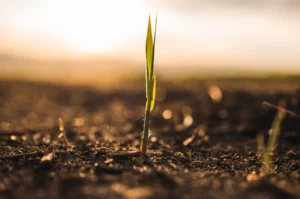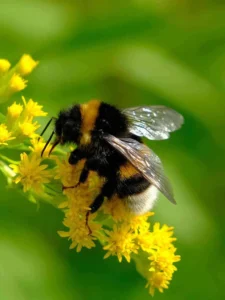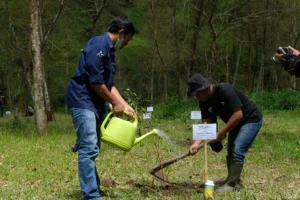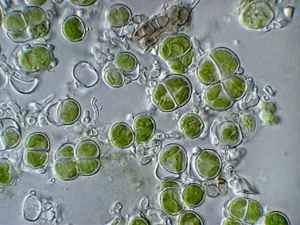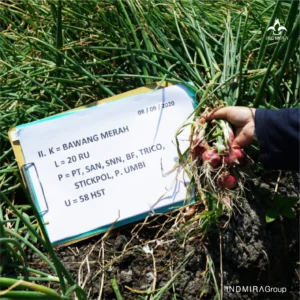n May 2020, Indmira Group collaborated with shallot farmers in Bantul to launch the Integrated Farming Program. Indmira’s Integrated Farming is a program that integrates agriculture from upstream to downstream, enabling quality control from cultivation to post-harvest processes.
The program involves Indmira Group through Indmira, the farmers, and Amboja Farm. In short, this system reduces the number of parties in the supply chain, thereby shortening distribution channels from farmers to consumers while improving product quality through the application of precision agriculture technology.
The program provides various benefits, including traceable agricultural products, guaranteed product quality, and a closer relationship between Farmers as producers and Consumers as end-users.
In the cultivation process (upstream), Indmira worked with shallot farmers to implement fertilizer substitution. This substitution was not applied entirely—25% of inorganic fertilizer was replaced with organic fertilizer.
The aim of this substitution was to provide balanced nutrition for shallot plants. Just like other living organisms, balanced nutrition is essential for plant growth and development.
The organic fertilizers used in shallot cultivation included SAN fertilizer, SNN fertilizer, tuber fertilizer, and the Tricogreen biopesticide. Application of SNN fertilizer during the first 30 days of growth proved most effective for supporting vegetative growth of roots, stems, and leaves.
During the generative growth stage, when the shallot bulbs developed, the team applied tuber fertilizer. This fertilizer supported the bulbs’ optimal growth to meet market standards for shallots.
On Tuesday, September 8, 2020, farmers harvested shallots after 60 days. The harvested shallots had undergone several stages of treatment with organic fertilizers.
Immediately after harvesting, the shallots were dried and observed by Indmira’s Research Team to monitor shrinkage. From the harvest on a 0.5-hectare plot (360 Ru), the results were as follows:
- Total harvested (wet weight): 11,282 kg
- Average shrinkage: 32%
- Final actual product: 8,678 kg
Additional results included:
- Fertilizer cost savings reached 50%
- Over 50% of the harvest qualified as Grade A shallots (super-quality bulbs weighing > 6g)
- Productivity ratio of 1:17 kg (one seed produced 17 kg of shallots, compared to the average of 15 kg).
These harvest results showed that with minimal input, productivity exceeded the average. As a result, both farmers and consumers benefitted from every step of the process. Farmers produced high-quality commodities at good prices, while consumers received premium products with traceable production processes.

